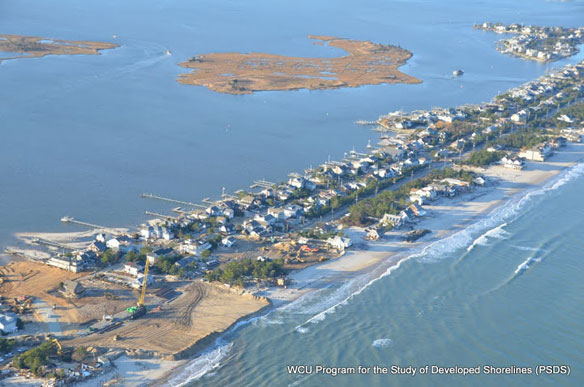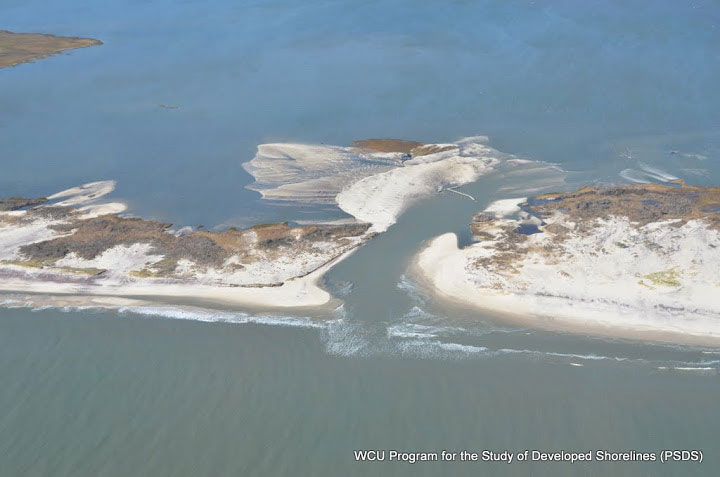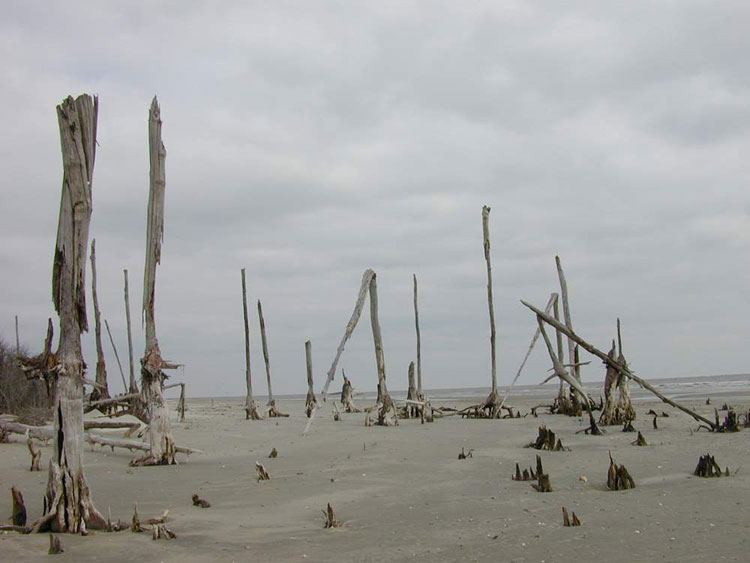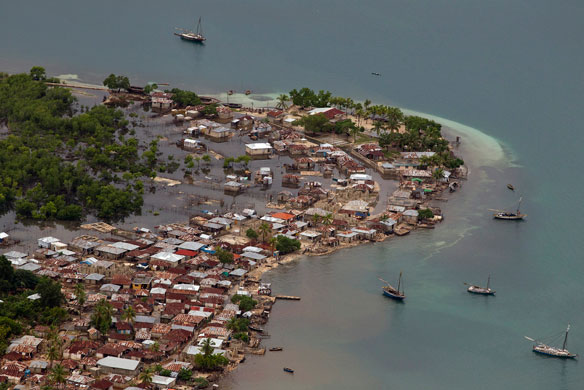Two Years On: Sandy Storm Inspires More Climate Research

This Wednesday marks the second anniversary of Hurricane Sandy, shocking photos showed the huge extent of the destruction caused by the storm. Sandy has spurred an unprecedented amount of research, attempting to tackle the questions about what role climate change might have played in producing or worsening the storm.
Hurricane Sandy ‘s Silver Lining, A National Geographic Video

A breach torn through New York’s Fire Island by Hurricane Sandy is bringing new life in to a long-polluted ecosystem. A National Geographic video.
Could This ‘Big U’ Save NYC From Another Superstorm ?

Six winning entries in a groundbreaking federal design competition to protect cities from rising sea levels were announced on Monday, and include a colossal “Big U” system that will fortify New York City’s most vulnerable, low-lying areas…
Hurricane Sandy Impacts Did Not Contribute to Subsequent Storm Flooding, A Study

Flooding in coastal areas bordering Great South Bay, N.Y. and Barnegat Bay, N.J. caused by winter storms that occurred following Hurricane Sandy was not influenced by changes Sandy made to barrier islands or other bay features, according to a new USGS Study.
Artificial islands off New York and New Jersey Proposed As Storm Protection

A string of artificial islands off the coast of New Jersey and New York could blunt the impact of storm surges that proved so deadly during Superstorm Sandy, according to a new proposal.
Decade of Fire Island Research Available to Help Understand Future Coastal Changes

In addition to understanding the impacts of the storm, USGS scientists are integrating analyses of short- and long-term coastal change to better understand what factors affect coastal shorelines and how geologic controls, sea-level rise and human activities contribute to their vulnerability. Results of the research at Fire Island are applicable to other barrier systems.
A Year After Sandy, The Wrong Policy on Rebuilding the Coast

One year after Hurricane Sandy devastated parts of the U.S. East Coast, the government is spending billions to replenish beaches that will only be swallowed again by rising seas and future storms. It’s time to develop coastal policies that take into account new climate realities. By Rob Young.
Waiting for the Next Superstorm

The hurricane Sandy was one of several in the past decades that meteorologists had previously considered “once in a century” events.
5 Things Hurricane Sandy Changed for Good

Some people and places may never be the same since Hurricane Sandy hit the northern Atlantic Coast on Oct. 29, 2012. The lingering effects include lives lost and irreplaceable mementos. Barrier islands were changed forever.
